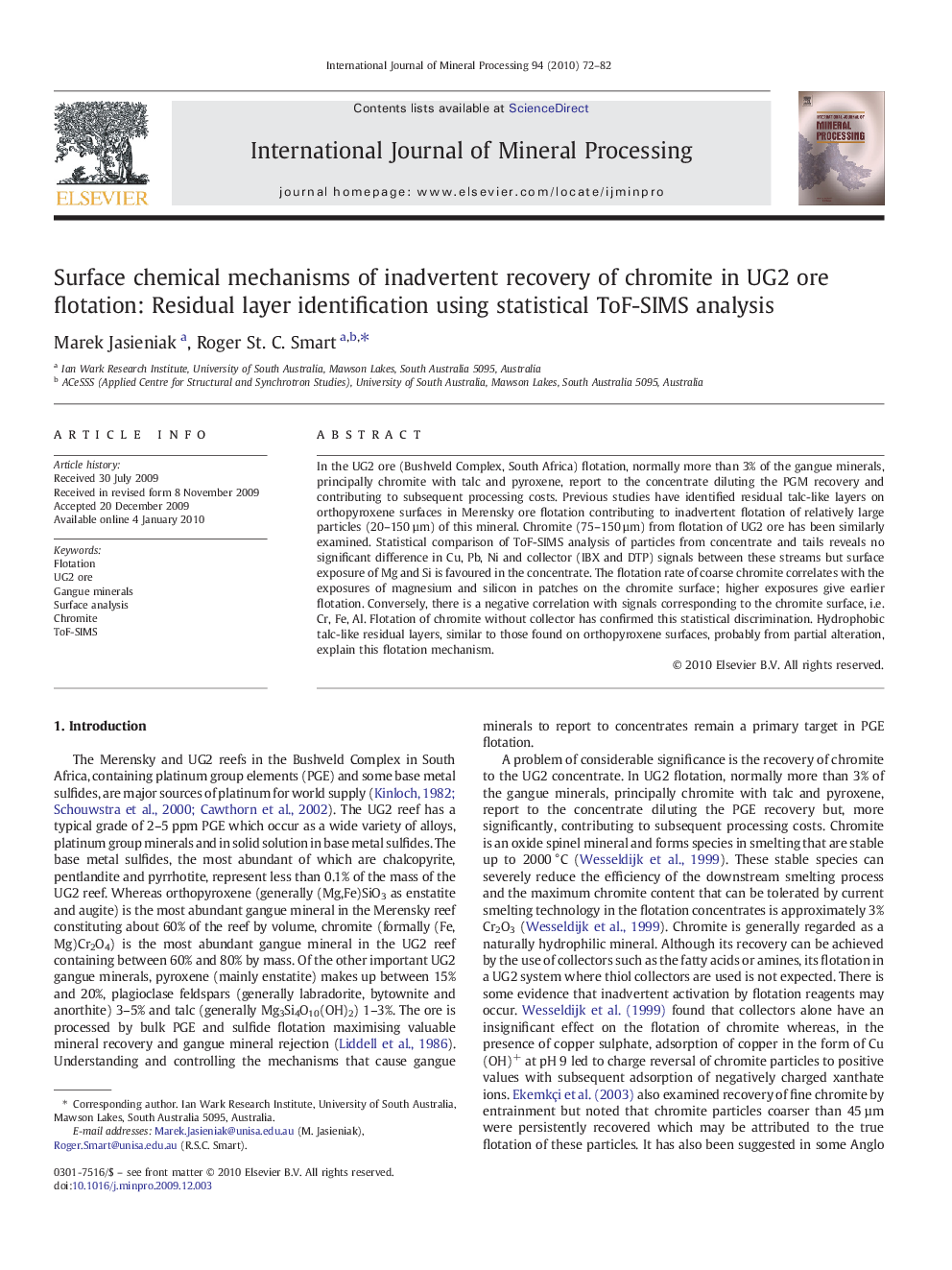| Article ID | Journal | Published Year | Pages | File Type |
|---|---|---|---|---|
| 214368 | International Journal of Mineral Processing | 2010 | 11 Pages |
In the UG2 ore (Bushveld Complex, South Africa) flotation, normally more than 3% of the gangue minerals, principally chromite with talc and pyroxene, report to the concentrate diluting the PGM recovery and contributing to subsequent processing costs. Previous studies have identified residual talc-like layers on orthopyroxene surfaces in Merensky ore flotation contributing to inadvertent flotation of relatively large particles (20–150 µm) of this mineral. Chromite (75–150 µm) from flotation of UG2 ore has been similarly examined. Statistical comparison of ToF-SIMS analysis of particles from concentrate and tails reveals no significant difference in Cu, Pb, Ni and collector (IBX and DTP) signals between these streams but surface exposure of Mg and Si is favoured in the concentrate. The flotation rate of coarse chromite correlates with the exposures of magnesium and silicon in patches on the chromite surface; higher exposures give earlier flotation. Conversely, there is a negative correlation with signals corresponding to the chromite surface, i.e. Cr, Fe, Al. Flotation of chromite without collector has confirmed this statistical discrimination. Hydrophobic talc-like residual layers, similar to those found on orthopyroxene surfaces, probably from partial alteration, explain this flotation mechanism.
